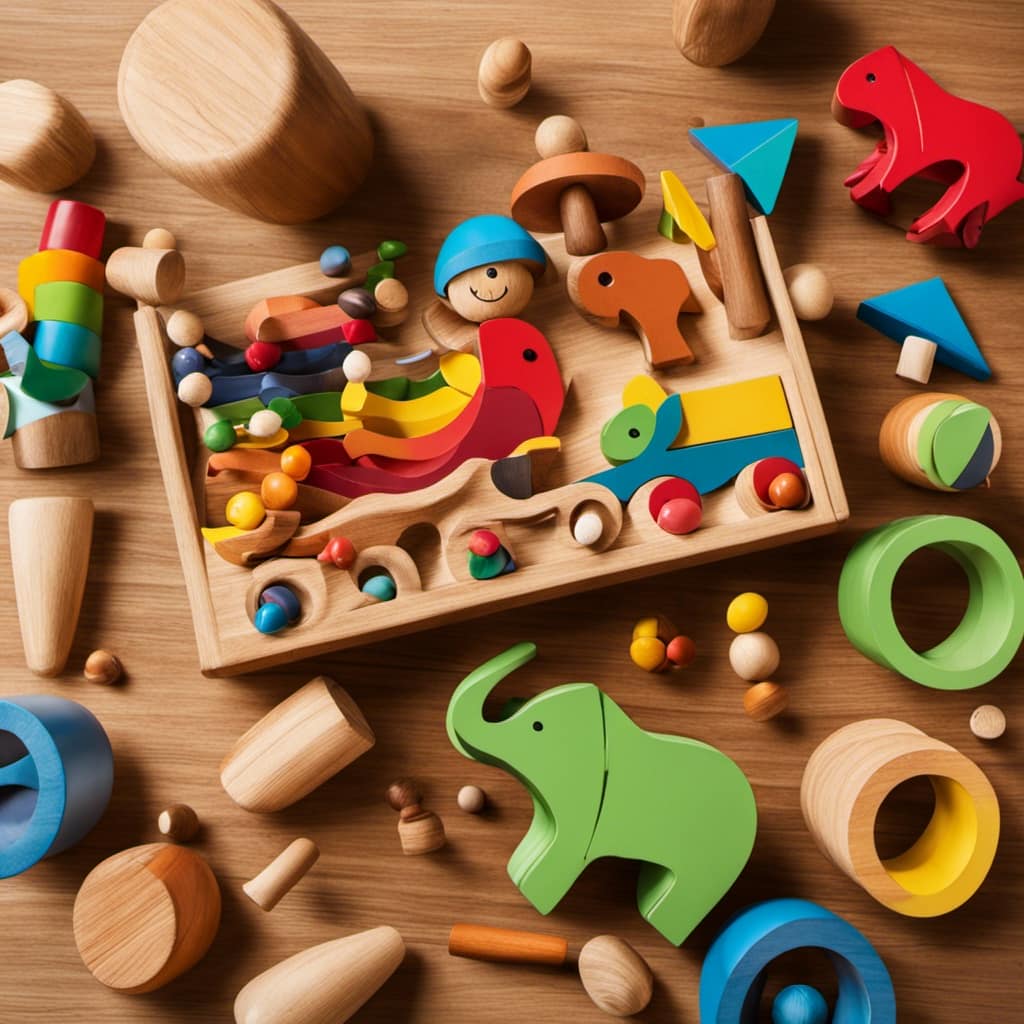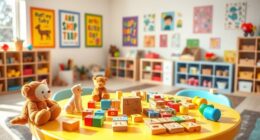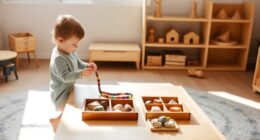As a parent, I am always on the lookout for activities that can help boost my toddler’s development. That is why I am excited to share with you the incredible benefits of incorporating toy organizing activities into Montessori-style play.
These activities not only enhance spatial awareness but also teach important concepts like size, shape, and distance. Plus, they encourage independent play, fostering creativity and problem-solving skills.
So, let’s dive into the world of toy lining and discover how it can truly transform your little one’s development.
Key Takeaways
- Toy lining activities develop spatial awareness and teach concepts like size, shape, and distance.
- Toy lining activities encourage independent play, promoting creativity and problem-solving.
- Toy lining activities foster a sense of autonomy and allow toddlers to explore their toys at their own pace.
- Toy lining activities promote learning about colors, shapes, and vocabulary.
Benefits of Toy Lining Activities for Toddlers
I love how toy lining activities for toddlers can develop their spatial awareness and teach them about size, shape, and distance. These activities provide opportunities for sensory exploration and imaginative play, promoting holistic development.
When children engage in toy lining, they are using their senses to explore the different textures, sizes, and shapes of the toys. This not only enhances their sensory awareness but also allows them to experiment with different arrangements and patterns.
Through imaginative play, toddlers can create stories and scenarios using the lined-up toys, fostering their creativity and problem-solving skills. They can also learn about the concepts of size, shape, and distance as they arrange the toys in different orders and formations.
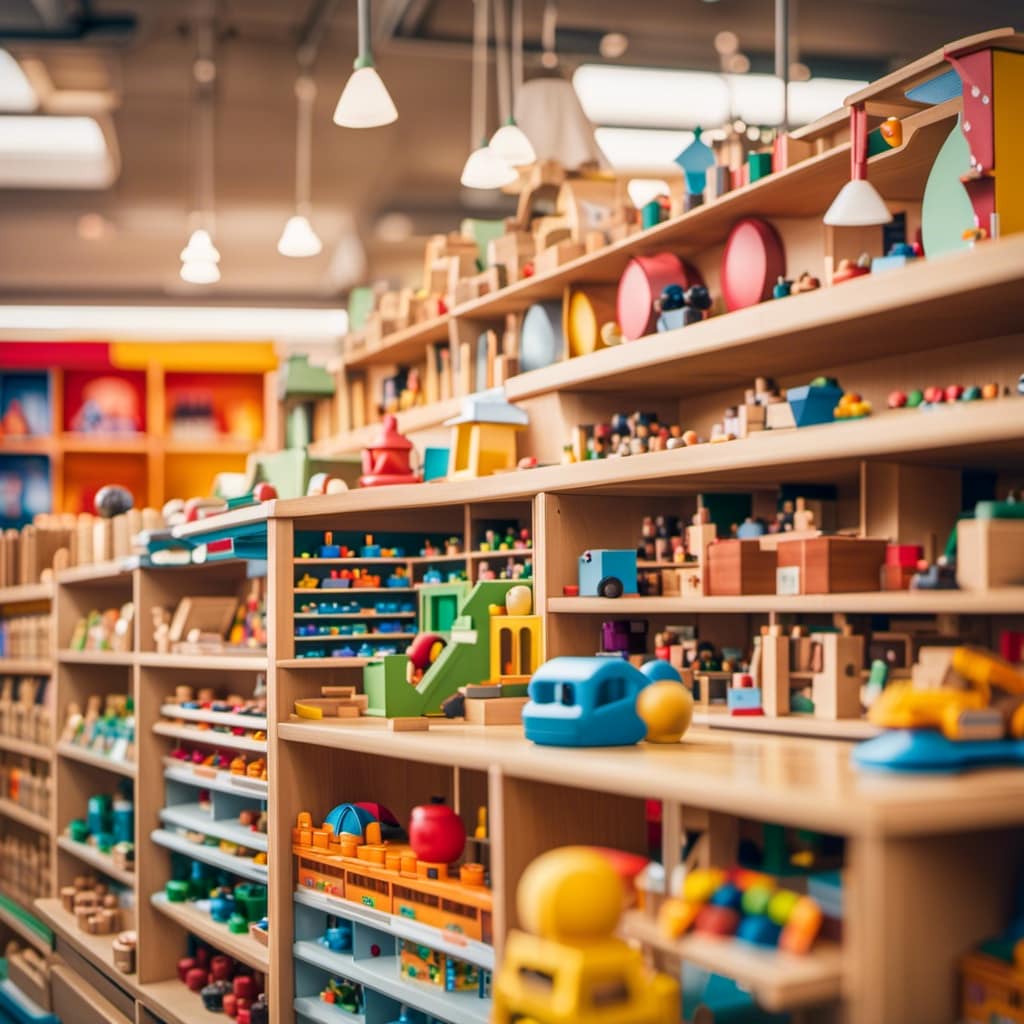
Overall, toy lining activities facilitate sensory exploration and imaginative play, contributing to a well-rounded developmental experience for toddlers.
Montessori-Inspired Sensory Bins and Sorting Activities
Engaging toddlers in sensory bins and sorting activities enhances their cognitive development and promotes learning through hands-on play.
Colorful sensory bins provide a visually stimulating experience for toddlers, capturing their attention and sparking curiosity.
Tactile toy exploration allows toddlers to engage their sense of touch, developing their sensory processing skills and fine motor abilities.
Sorting activities in sensory bins encourage toddlers to categorize and organize objects, fostering problem-solving skills and cognitive development.
Research shows that these Montessori-inspired activities have numerous benefits for toddlers. They stimulate their senses, allowing them to explore different textures, colors, and shapes. By engaging their hands and minds, these activities promote the development of fine motor skills, hand-eye coordination, and problem-solving abilities.
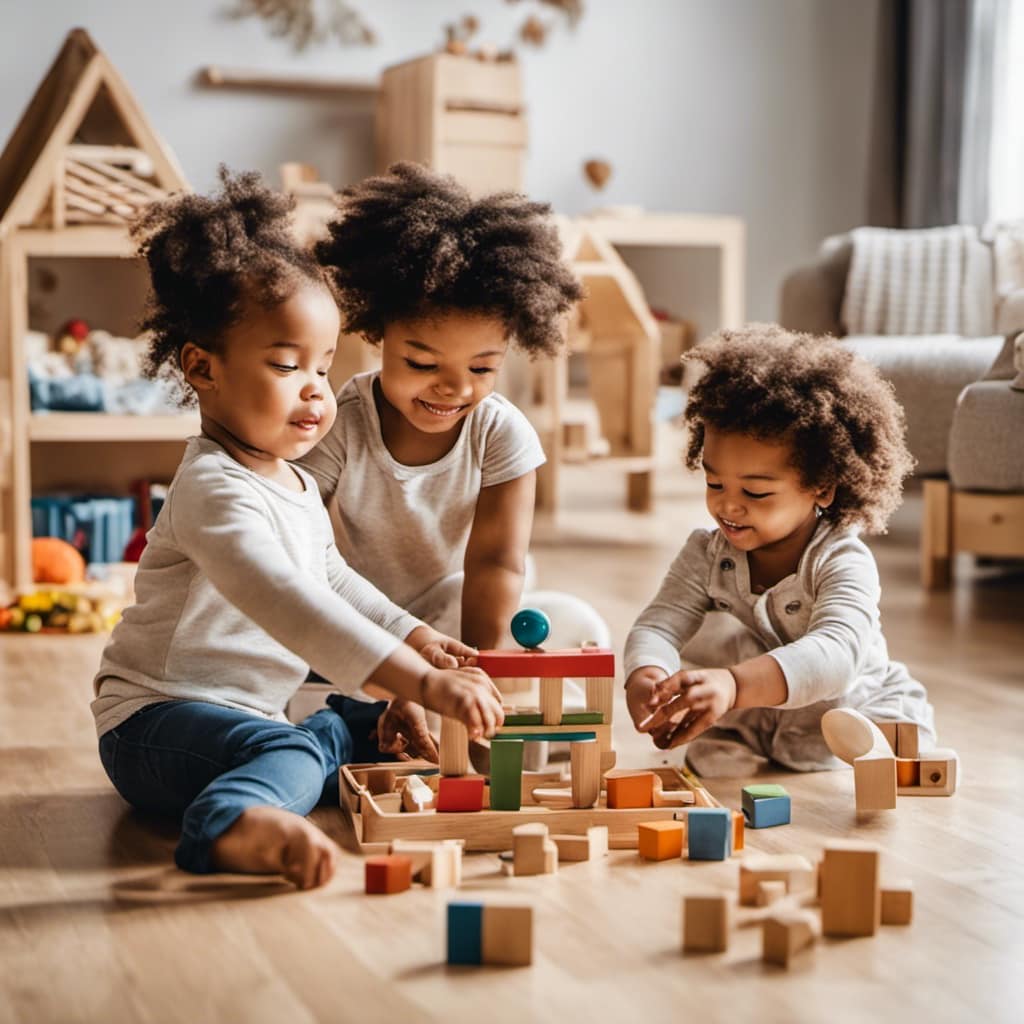
Furthermore, the colorful sensory bins and tactile toy exploration provide a multisensory experience that enhances learning and cognitive growth.
Developing Fine Motor Skills Through Toy Stacking and Arranging
Stacking and arranging toys is a fun way to improve fine motor skills and hand-eye coordination. The benefits of toy stacking activities are numerous.
Not only does it enhance fine motor skills, but it also helps develop dexterity and hand strength. By manipulating and carefully placing toys on top of one another, children are improving their ability to control their hand movements and coordinate them with their eyes. This skill is crucial for tasks like writing, tying shoelaces, and using utensils.
Additionally, toy stacking activities encourage problem-solving skills as children figure out how to balance the toys and create stable structures. This type of play also promotes spatial awareness and an understanding of cause and effect.
Language Development With Toy Labeling and Sorting
Labeling and sorting different objects can greatly enhance a toddler’s language development and vocabulary expansion. By engaging in toy labeling techniques and playing sorting games, toddlers can improve their language skills in a fun and interactive way.
Here are three benefits of toy labeling and sorting for language development:
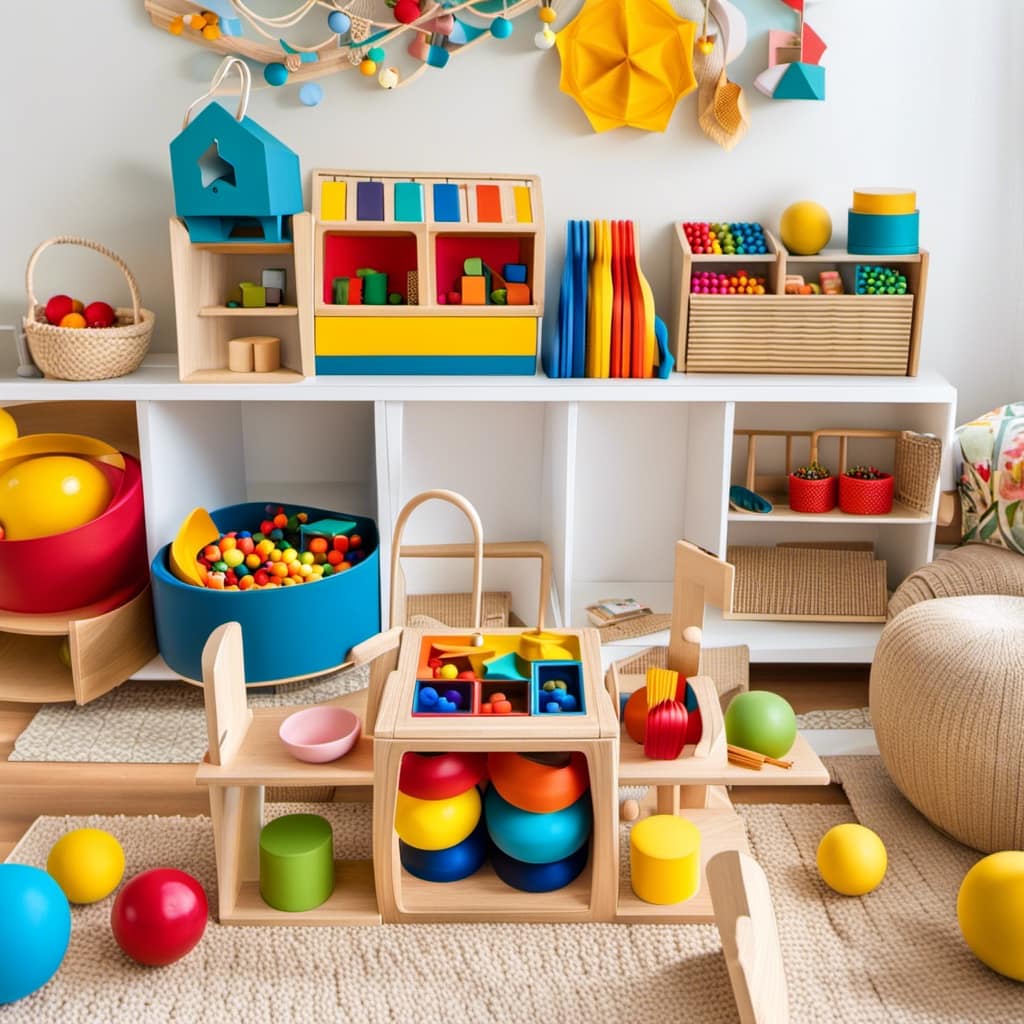
-
Increased word recognition: Sorting toys into different categories, such as animals, vehicles, or shapes, helps children learn new words and expand their vocabulary. By labeling toys with words, toddlers reinforce word-object association and enhance their language development.
-
Enhanced cognitive skills: Sorting objects into different categories requires cognitive skills such as classification and organization. This activity helps toddlers develop their cognitive abilities while simultaneously expanding their vocabulary.
-
Promotion of word association: Labeling toys with their names promotes word association skills and further expands a toddler’s vocabulary. This technique helps toddlers make connections between words and objects, strengthening their language development.
Overall, toy labeling and sorting games provide valuable opportunities for toddlers to improve their language skills while having fun and engaging in play.
Introducing Toy Patterns and Sequencing to Toddlers
I love introducing toddlers to the concept of patterns and sequencing through fun and interactive toy activities.
Toy pattern recognition and sequencing skills development are essential for their cognitive development.

By using toys with patterns or specific sequences, such as blocks of different colors and shapes, we can engage toddlers in stimulating activities.
Encouraging them to create patterns or arrange toys in a specific order helps them understand sequencing, which is important for later math skills.
It enhances their cognitive development and makes learning math enjoyable.
Research shows that early exposure to patterns and sequencing promotes problem-solving abilities and logical thinking.
Enhancing Cognitive Development Through Toy Lining Activities
Engaging in toy lining activities helps toddlers develop spatial awareness, fostering their understanding of size, shape, and distance. This type of play promotes spatial awareness by encouraging children to arrange their toys in a specific order or line them up according to size or shape. It also enhances problem-solving skills as toddlers figure out how to arrange their toys in a logical and organized manner.
By promoting spatial awareness, toy lining activities lay the foundation for future math and science skills. It allows children to visually understand concepts like measurement and proportion. Additionally, the act of arranging and organizing toys can give toddlers a sense of accomplishment and pride, boosting their self-esteem.
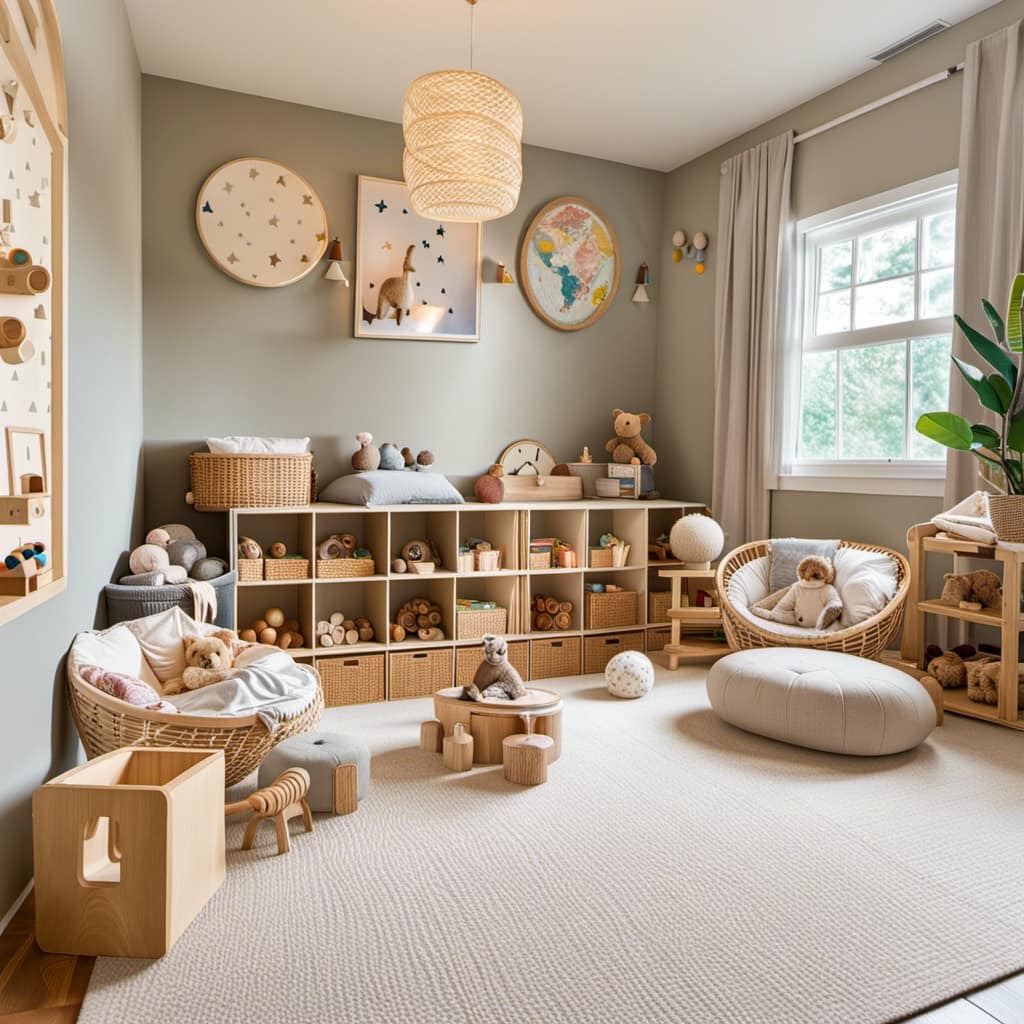
It’s truly amazing how something as simple as lining up toys can have such a powerful impact on a child’s development.
Incorporating Toy Lining Activities Into Daily Play Routine
By incorporating toy lining into my daily play routine, I can support my child’s spatial awareness and problem-solving skills.
Toy lining activities can be incorporated into various play settings, including outdoor play and sensory play.
In outdoor play, I can encourage my child to line up their toys in different patterns or sequences on the grass or in the sandbox. This not only enhances their spatial awareness but also promotes creativity and critical thinking as they figure out how to arrange the toys.
Similarly, in sensory play, I can create a sensory bin with different textures and objects for my child to line up. This activity engages their senses while also developing their problem-solving skills.
Frequently Asked Questions
What Are Some Alternative Activities That Can Promote Spatial Awareness in Toddlers, Besides Toy Lining Activities?
Spatial awareness activities, besides toy lining, include building with blocks, playing with puzzles, and engaging in movement-based games like Simon says. Open-ended play benefits children by promoting creativity, problem-solving, and cognitive development.
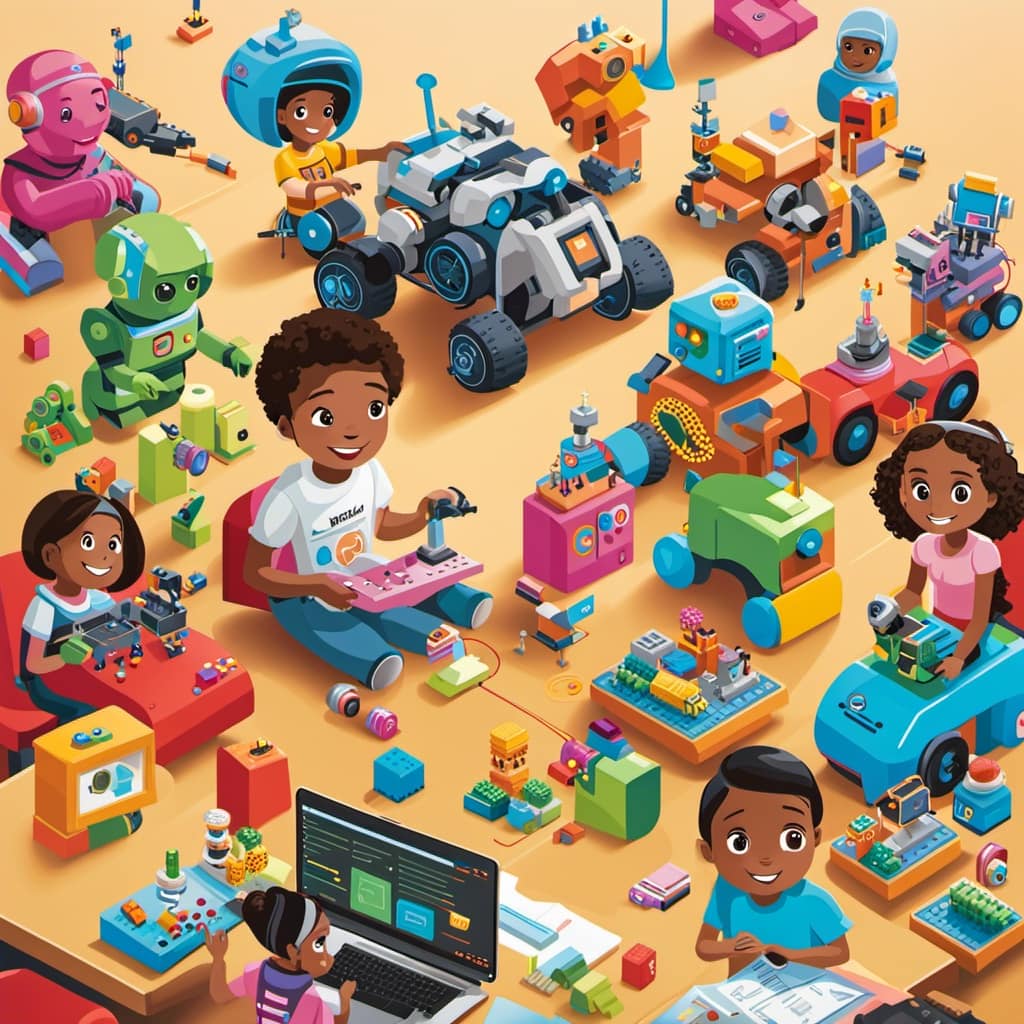
How Can Parents Incorporate Sensory Bins and Sorting Activities Into Their Daily Routine With Their Toddlers?
I can incorporate sensory play and sorting activities into our daily routine with my toddler. It enhances their developmental milestones, such as cognitive skills and vocabulary, while making learning fun and engaging.
Are There Any Specific Toys or Materials That Are Recommended for Developing Fine Motor Skills Through Stacking and Arranging?
For developing fine motor skills through stacking and arranging, recommended materials include building blocks, pegboards, and puzzles. These toys require precision and hand-eye coordination, helping toddlers improve their dexterity and coordination.
How Can Parents Encourage Language Development Through Toy Labeling and Sorting Without Using Specific Categories?
To encourage language development through toy labeling and sorting, I recommend using descriptive words instead of specific categories. For example, labeling toys with colors, sizes, or actions can help expand vocabulary and promote word-object association.
Are There Any Potential Risks or Safety Concerns Associated With Introducing Toy Patterns and Sequencing to Toddlers?
There are potential risks and safety concerns when introducing toy patterns and sequencing to toddlers. It’s important to ensure that the toys are age-appropriate, free of small parts, and non-toxic. Supervision is also crucial to prevent choking hazards or accidents.
Conclusion
In conclusion, toy lining activities in Montessori-inspired play are like the magical keys that unlock a toddler’s potential. These activities not only boost their development but also ignite their imagination and curiosity.
It’s like sprinkling fairy dust on their learning journey, guiding them to explore, create, and problem-solve. From sensory bins to fine motor skills, language development to patterns, these activities are the secret ingredients that nourish their growing minds.

So, let’s embrace the power of play and watch our little ones soar like shooting stars in their journey of discovery.
